Home
Designs for Low-Car Housing
Designs for Low-Car Housing
Welcome to our consultation on "low-car design" in Whitehill & Bordon. Before we show you how future housing could be designed to meet parking needs, we want to let you know where we're coming from and why we want your views...
New housing in East Hampshire will need to be designed to address many issues, including the following:
- tackling the climate emergency
- making an efficient use of land
- enhancing a community's "sense of place"
- achieving high-quality building and street design
- supporting a high quality of life
Everyday questions of how to accommodate the car within a neighbourhood, when it's parked and when it's not, touch on all of these issues:
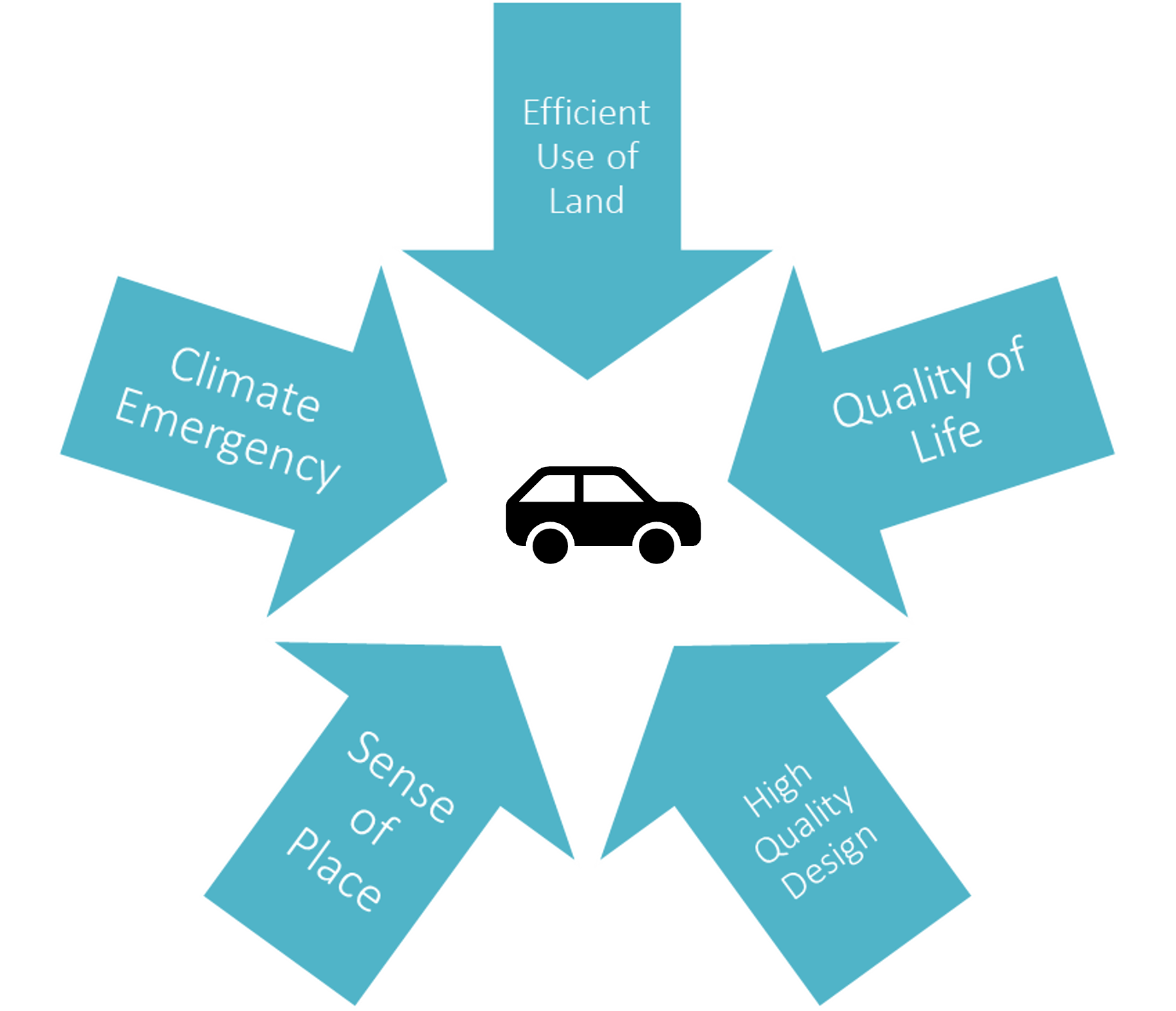
These different influences on the design of new parking need to be considered together. In the context of the climate emergency, we need to ask: is there a better trade-off between these things that involves fewer cars?
The benefits of having fewer cars in new housing development could be:
- Healthier lifestyles, because people walk and cycle more frequently due to lower levels of traffic
- Lower carbon emissions because people become less dependent on the car
- More space for trees and plants within new housing developments, improving how they look & feel
- Improved climate resilience, because more greenery = more shade and greater urban cooling
- On individual house plots, more space for outdoor living in the summertime, or for future extensions to indoor living spaces
It is recognised that improvements will need to be made to the provision of public transport, as well as walking and cycling facilities, if use of the private car is to reduce. However, we are initially seeking opinions on how best to accommodate fewer cars in residences.
For this consultation, we initially want to understand your priorities for how new housing development should look and feel - accepting that people are likely to own cars and that they will need to be parked somewhere.
Click through to see some designs and let us know your thoughts...
Low-car designs for low-density housing
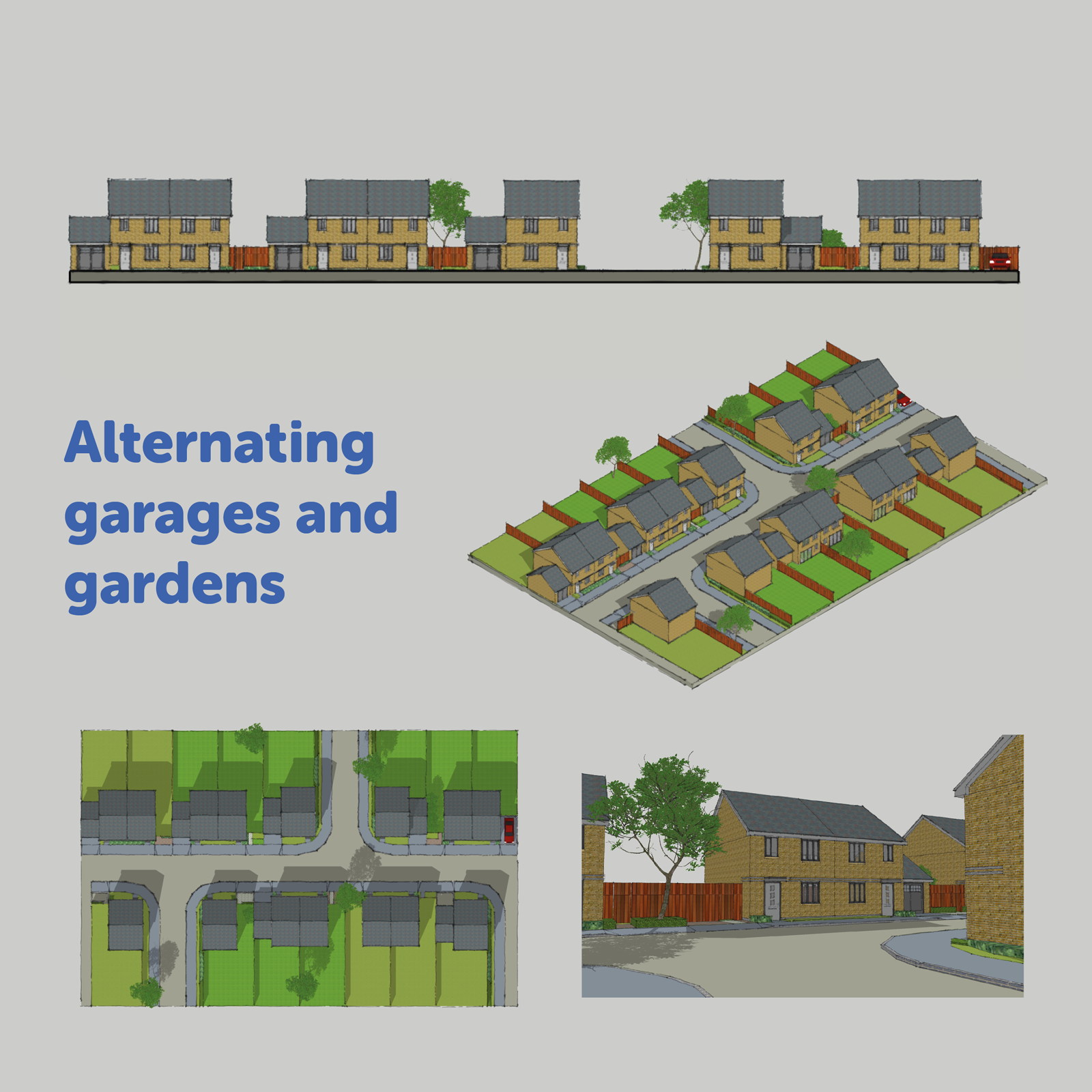
This design allows residents to choose between a bigger garden without a garage or driveway, or a smaller garden with a single garage or driveway at the side of the property.
Residents owning a car will need a a garage or driveway to house the car, resulting in a smaller garden.
There is potential for less built form and more garden space, which is good for reducing flood risks.
The streets would need to be narrow and provide minimal space to restrict on-street parking.
Could be good for:
- Climate-resilient neighbourhoods
- More outdoor space for home-owners
Could be less good for:
- Attractive walking & cycling routes
- More street trees & planting
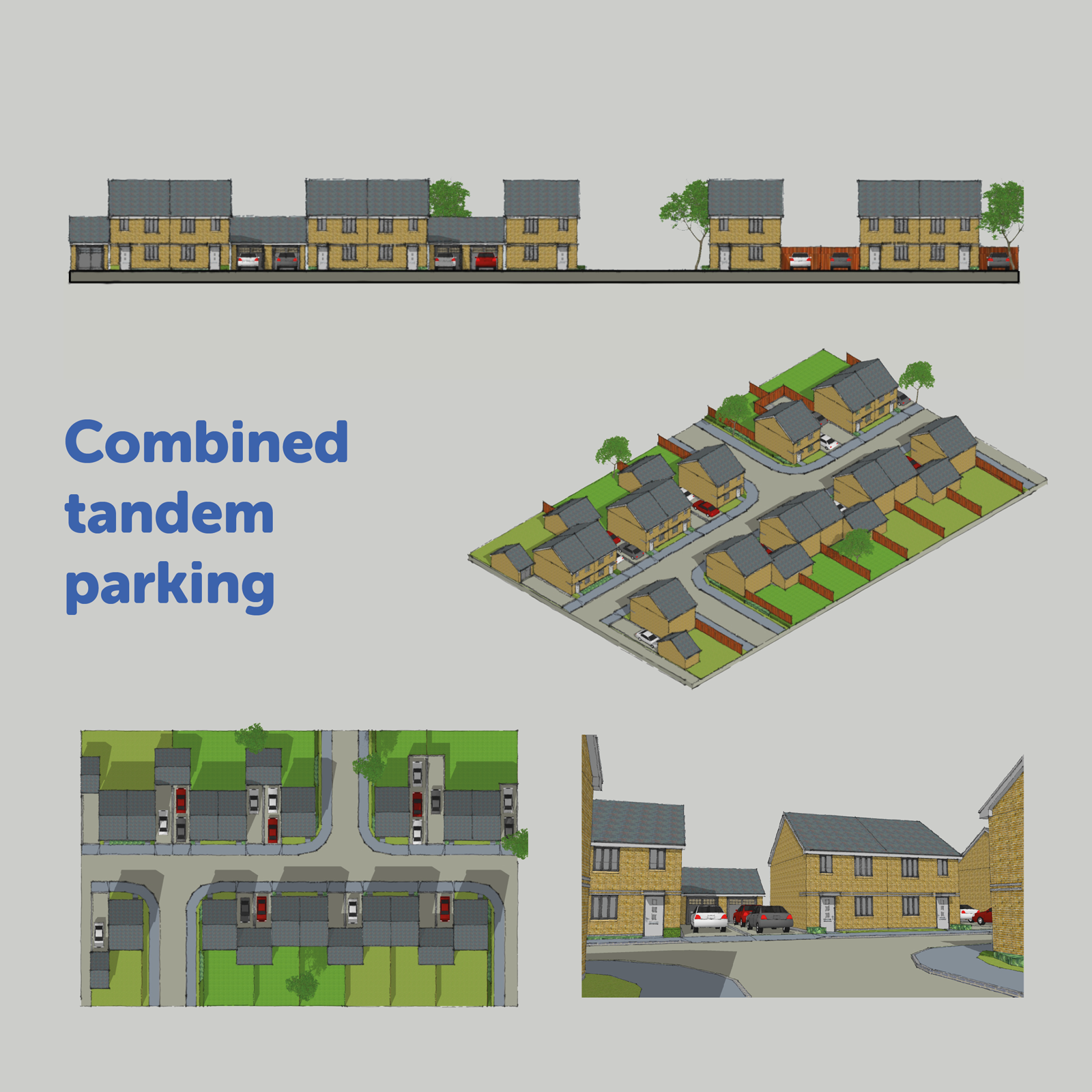
This second design offers garage and driveway parking for multiple car ownership in a household.
It keeps cars off the road as parking is to the side of the property but could encourage high levels of car ownership, which isn't good for carbon emissions.
It also reduces garden sizes to accommodate more car parking.
Could be good for:
- More street trees & planting
- Attractive walking & cycling routes
Could be less good for:
- Lower carbon emissions
- More outdoor space for home-owners
Low-car designs for medium-density housing
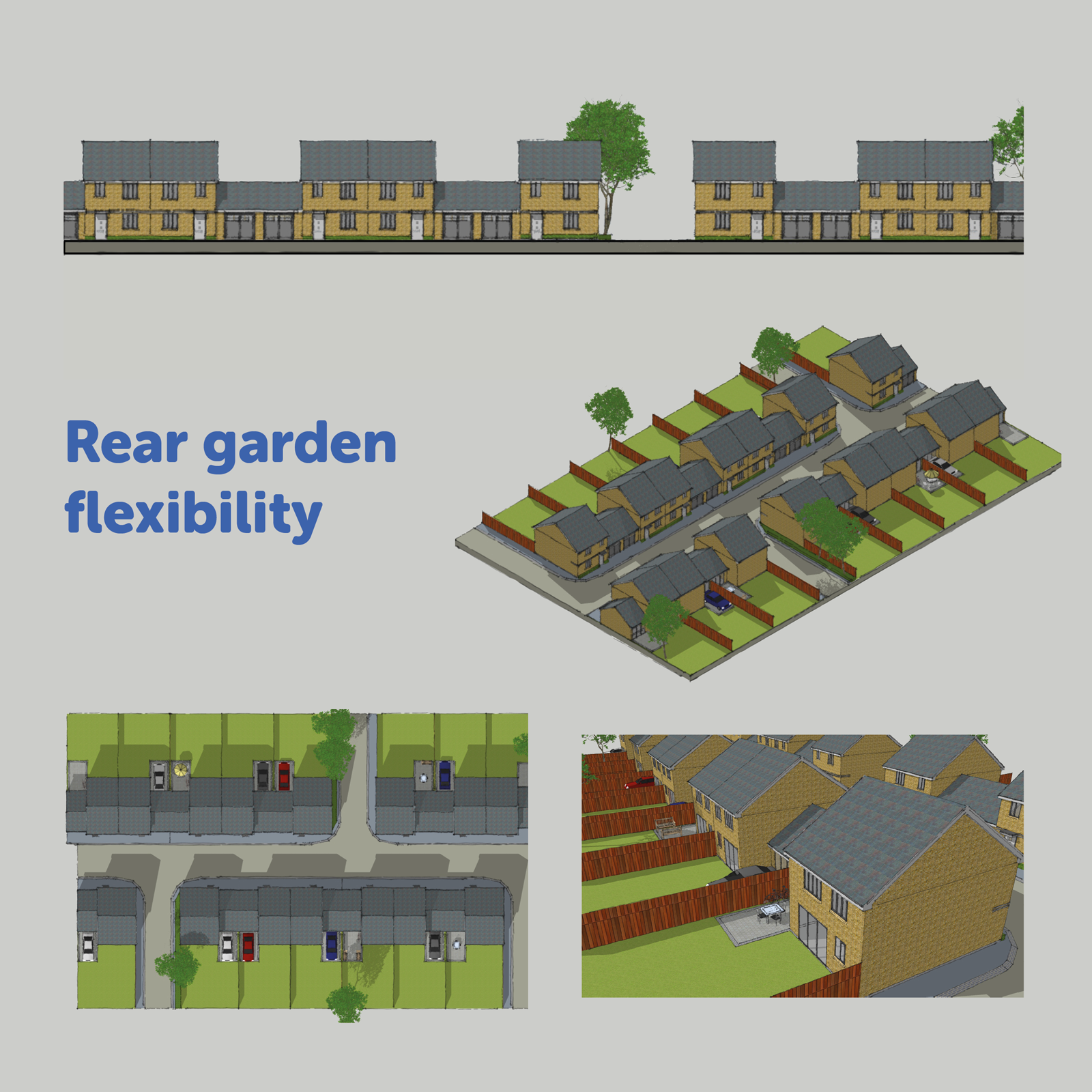
This design offers a garage to each property and the option for another parking space beyond, in the back garden, accessed by driving through the garage.
Residents have the option to have just one car parking space in the garage or increase the amount of parking by forfeiting garden space.
It is flexible and keeps cars off the road, but may encourage higher levels of car ownership, which isn't good for carbon emissions.
Could be good for:
- More outdoor space for home-owners
- Attractive walking & cycling routes
Could be less good for:
- Lower carbon emissions
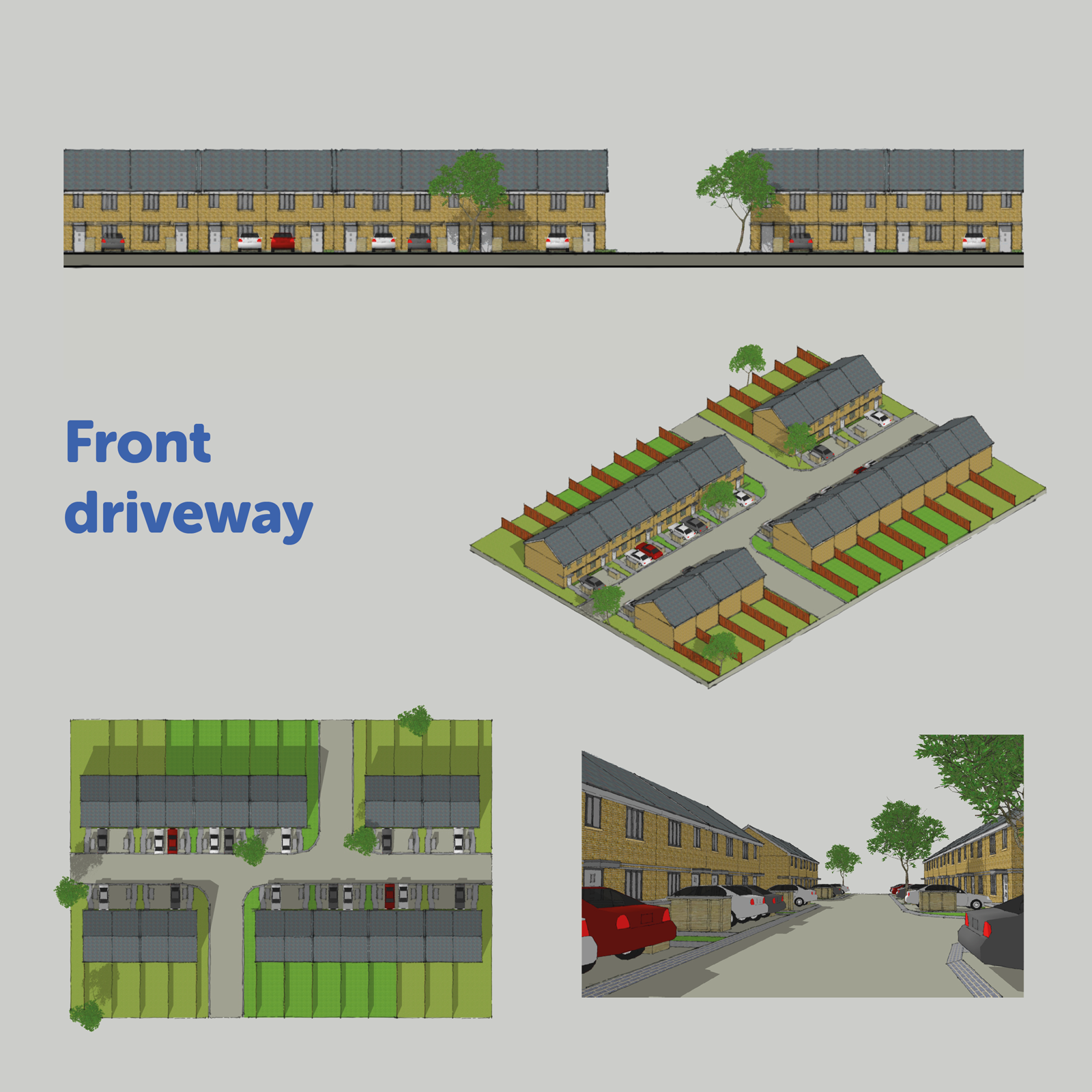
This design involves driveway parking for one car, in front of the house.
It encourages low-car living by using one dedicated space, helping to reduce carbon emissions.
The parking area could also be used for other purposes, such as converting to a garden for those residents that do not own a car.
Could be good for:
- Lower carbon emissions
- More outdoor space
Could be less good for:
- Attractive walking & cycling routes
- More street trees & planting
Low-car designs for high-density housing

This design is a hybrid of on-street parking arrangements and driveway parking.
It shares many of the benefits and drawbacks of the front driveway design, with the street dominated by cars.
But there may be less space on the street, including for street trees.
Could be good for:
- Lower carbon emissions
- Some outdoor space for home-owners
Could be less good for:
- Attractive walking & cycling routes
- Climate-resilient neighbourhoods
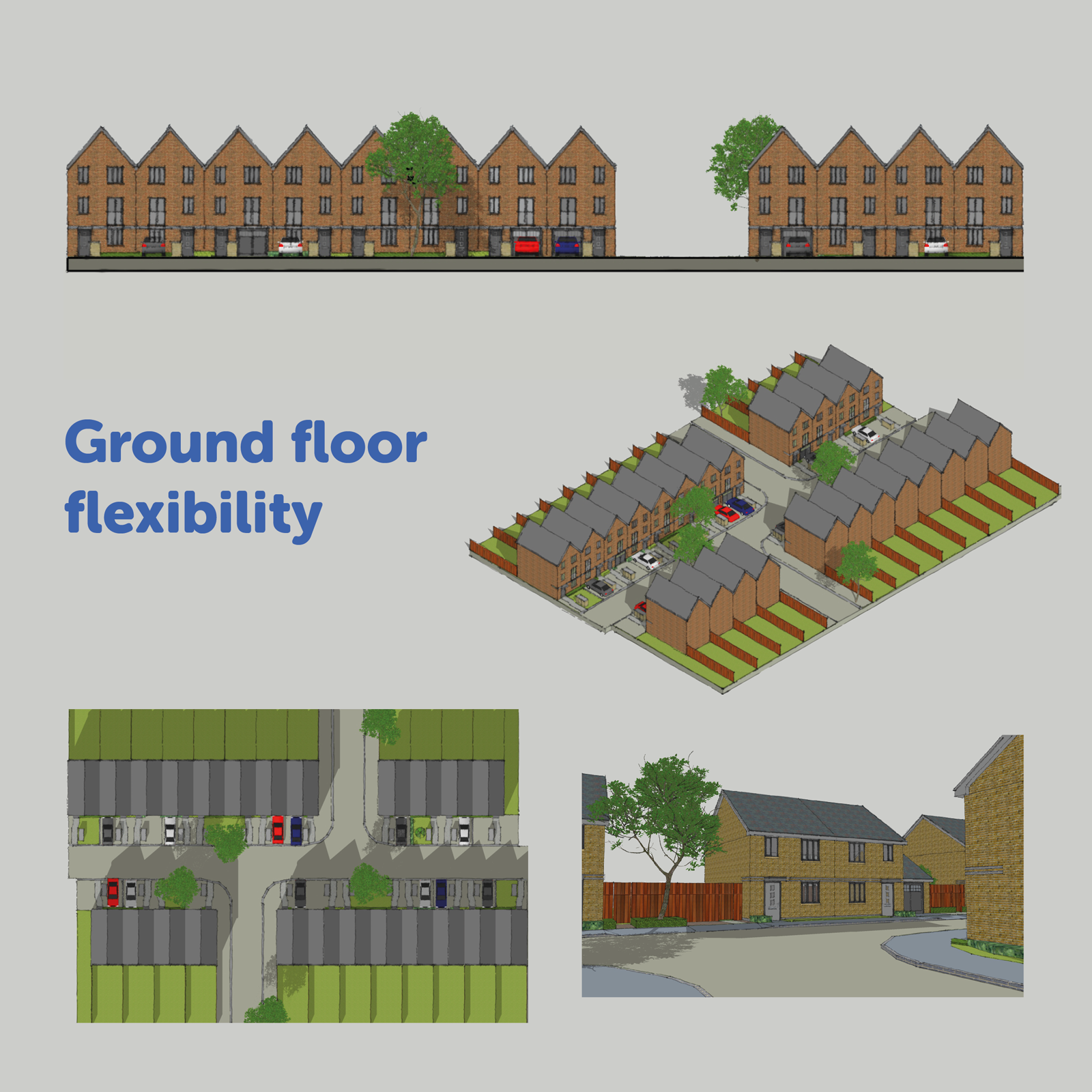
This design provides each property with a driveway positioned in front of a flexible ground floor room. The ground floor room can be suitable for conversion to a garage if desired.
The driveway allows parking for one car but if residents wish to own two cars they must forfeit the ground floor room to become a garage.
Low-car living would be encouraged, helping to reduce emissions. It would be possible to convert the driveway to a front garden for those households not owning a car.
Could be good for:
- Lower carbon emissions
- Some outdoor space for home-owners
Could be less good for:
- Attractive walking & cycling routes
Thank you for taking the time to respond to East Hampshire District Council's consultation on low-car design housing options in Whitehill & Bordon.
This engagement phase has finished

...
